 David Sibbet is a world-reknowned visualization expert and author of the new book Visual Leaders: New Tools for Visioning, Management, and Organization Change. He will be presenting at our free webinar Thursday, January 31, 2013 at noon PT. (Seats are filling up fast! Click to register now.)
David Sibbet is a world-reknowned visualization expert and author of the new book Visual Leaders: New Tools for Visioning, Management, and Organization Change. He will be presenting at our free webinar Thursday, January 31, 2013 at noon PT. (Seats are filling up fast! Click to register now.)
We're also giving away several copies of David's new book! Simply participate in our short Leadership Survey for a chance to win.
The world is becoming an increasingly visual place—and your organization, business, or team needs a leader with the right visual IQ and know-how to communicate the "big picture." You don't have to be an artist, but becoming adept at utilizing visual practice techniques will be a huge boon to getting your team on board, sharing ideas, propelling projects forward, and so much more.
Read on for our interview with David Sibbet, who shares his expertise about the practice of visualization, why it's important to be a visual leader today, and how you can become one.
People-OnTheGo: For those who aren't familiar with visualization or visual practice, can you please describe the basic ideas of the field and its uses in a business or professional environment? What are some common applications?
 David Sibbet: Visual practice is using the tools of design thinking and graphic design interactively—much like one uses spoken words. Where once these ways of working were focused on design itself, the methods are now used by leaders and facilitators to support meetings, teams, and organization change processes. Visual practice includes graphic recording of meetings, visual facilitation of meetings and teams, and use of many kinds of media on the part of leaders to collaboratively develop visions, processes, and plans.
David Sibbet: Visual practice is using the tools of design thinking and graphic design interactively—much like one uses spoken words. Where once these ways of working were focused on design itself, the methods are now used by leaders and facilitators to support meetings, teams, and organization change processes. Visual practice includes graphic recording of meetings, visual facilitation of meetings and teams, and use of many kinds of media on the part of leaders to collaboratively develop visions, processes, and plans.
Why do think it's important in this day and age for leaders and managers to be "visual leaders"?
Almost all media in today's world integrates text and graphics, and in increasing numbers of cases, video. Not only are younger people quite fluid with these new ways of communicating, but anyone who is trying to develop and align people on new plans needs visuals to make sense out of the complexity. People understand how different parts of an organization connect and work together with mental models, diagrams, maps, and other kinds of displays. A leader who is visually adept has a tremendous advantage in his or her personal communications. If a leader understands how to work with and guide visual professionals it is an even greater advantage.
How can visualization techniques improve meetings, project management, and overall team function?
Active visualization improves meetings in four proven ways. 1. Visual spark imagination. 2. Active recording and co-creation greatly increases engagement. 3. Visual are the key to big picture thinking and systems thinking in groups. 4. Visuals create a group memory that supports implementation and action. This latter aspect is critical to project management, which is largely about getting actions to align and integrate over time. While project management software is highly visual, it is designed for individuals. Graphic templates, decision rooms, roadmaps and other large format visuals are what work with groups. Teams that understand how to run visual meetings and work visually in virtual settings have a much greater chance of getting results than those that don't—especially if they helped co-create the key documents they steer by.
What are three ways that leaders, managers, and others can increase their visual IQ? For non-artists/drawers, what are some tips and tricks to overcoming a fear or hesitancy of using these visual strategies?
Visualization is effective with very simple shapes and figures that anyone can learn to draw. The first way a leader or manager can become more literate is to use visuals in his or her personal notetaking and diagramming to thinking through ideas. A second important way is to begin paying attention to organizing mental models and metaphors that are embedded in verbal communication, and allow people to see how things work together. Visual note taking helps with this, but working with a visual practitioner who graphically records what is happening in key meetings raises everyone's consciousness on a group basis about the metaphors being used. To the extent that much of strategic thinking is analogous thinking (i.e. comparing one thing with something else), visualizing these comparisons allows everyone to expand on, challenge, and ultimately understand how everyone thinks things should work. A third way is to encourage teams and groups to share their ideas with each other using graphic templates rather than slide decks. Slides help the individual develop ideas, but do not invite enough engagement and interaction in most cases to allow others to come to new insight. Large murals and sketches, sticky notes and timelines allow groups to develop ideas all together at a rate that everyone can absorb. Drawing and diagramming is a way of thinking in and of itself. Consciously picking different formats to work with is like going to a brain gym and working out all the different mental muscles available to human beings.
Please describe some of your favorite visualization techniques and technologies.
A. Telling a group story visually is a winner in any kind of situation where you need to onboard new people, reflect on the past for insights, reinforce and think about values and culture. B. I love using graphic templates in small groups to create rapid prototypes of different things—like the general environment, possible visions, new business models, potential action plans—and then comparing for common themes and insights. Groups are full of wisdom and ideas if allowed the means to express them. C. Another favorite is taking strategy, visions, new business models, and other outputs from key meetings and turning them into story map posters that any leader can use to share the conclusions more widely. Treated like software, these large murals can go through versions and people provide input and feedback. The process of vetting the images aligns everyone who is involved, and makes the visuals very meaningful when they are eventually used in less interactive media. The technologies that allow these things to happen easily consist of readily available big paper from plotter printers, all variety of sticky notes in many color, many choices of water color markers, digital cameras and simple photo processing software. The professional tools for print production, infographic design, and video are easier and easier to use. There really is no technical barrier these days to being highly visual, as young people are discovering in explosions of interest.
What do you see is the future of visualization? And why is it important to get on board with this practice now?
In general, rich media is on the rise in all channels of communication. In business, because visualization is essential to systems thinking and design, and both these qualities are in high demand, visualization is also in increasing demand. This is probably why "design thinking" is so trendy right now. The fact that new touch technologies are transforming our ways of relating to the computer is bringing hand-creation back into vogue, so visualization goes beyond thinking to co-creating. In the future it's possible we'll see keyboards as a very outdated way to interface with information. Since a premium in any organization is having people engaged, understanding what they are doing, and remembering plans as everyone works on different aspects of a project—and these benefits come regularly when groups work together in visual ways. I believe you will see visualization become as standard as writing and calculating.


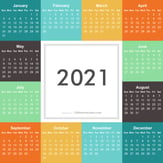
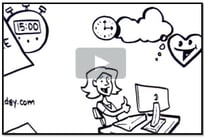



 What makes a good leader to you? Simply answer the questions in our brief
What makes a good leader to you? Simply answer the questions in our brief 
 Did you know that only a fraction of the people who want to write a book ever do? Why?
Did you know that only a fraction of the people who want to write a book ever do? Why? Lynda McDaniel is a writing coach and co-founder of The Book Catalysts.
Lynda McDaniel is a writing coach and co-founder of The Book Catalysts.  Daniel Guillory, CEO of Innovations International, is a recognized expert on creativity and innovation, having worked with Toyota Financial Services, Ronald McDonald House Foundation, Merck & Co., and many other corporations and non-profits. We asked him to share his top five book picks on creativity, the brain, and innovation for both in and outside the workplace, so you can better tap into that vast, subconscious well:
Daniel Guillory, CEO of Innovations International, is a recognized expert on creativity and innovation, having worked with Toyota Financial Services, Ronald McDonald House Foundation, Merck & Co., and many other corporations and non-profits. We asked him to share his top five book picks on creativity, the brain, and innovation for both in and outside the workplace, so you can better tap into that vast, subconscious well: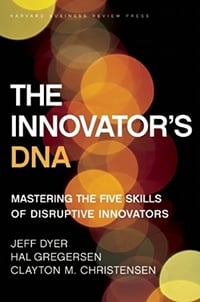


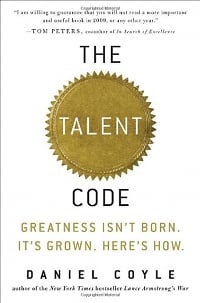
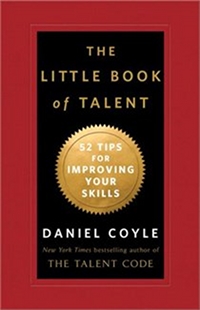
 Summary
Summary
 People-OnTheGo: What prompted you to write Could Surfing? And why now?
People-OnTheGo: What prompted you to write Could Surfing? And why now?
 If you Google “cloud computing,” you are likely to find more than 200,000,000 results. Yes, that is 200 million of them.
If you Google “cloud computing,” you are likely to find more than 200,000,000 results. Yes, that is 200 million of them. 

